I’m largely responsible for making my wife into a wine glass snob. Not a wine snob, mind you; a wine glass snob. If humanly possible, Mary will try match her Cabernet Sauvignon and Sauvignon Blanc with the most appropriate stemware available.
The folks at Trius Winery in Niagara-on-the-Lake, Ontario, must also claim some responsibility for this obsession. That’s where Mary and I—early in our dating life—attended a wine tasting event where guests learned how different the same wine can be in a different glass. For the Pinot Noir we sampled, the variance between the tight Riesling glass and the more generous bowl of a traditional Pinot vessel was pronounced.
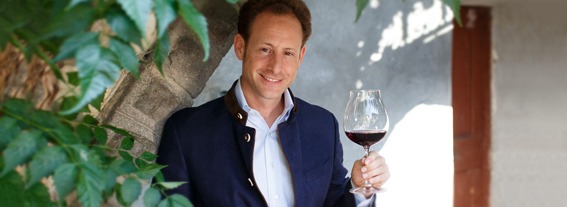
Riedel CEO Maximilian Riedel
Despite having become somewhat more immersed in the wine industry in recent years, I was reminded again how big a deal the right glass can be while attending Niagara’s Big Bottle Golf Tournament a couple months back, an event that raises funds for the region’s migrant wine workers. Before dinner, we got to sample an oaked Chardonnay (I believe it was Domaine Queylus’ Tradition) in both a small, classic white wine glass and a proper Oaked Chardonnay glass—both from renowned glass manufacturer Riedel. Hiding inside the smaller glass was a distinctive tinny aroma, which subsequently, and unfortunately, fed onto a rather restrained palate. In the big, wide-mouthed Chardonnay glass, on the other hand, it was fresh and floral. And instead of tin there was a wet stone minerality, accompanied with green apple, pear and subtle citrus. There was certainly evidence of oak there, but not obtrusively so—just this wonderful, inviting balance.
Many there around me, despite being veterans of the wine industry, were similarly struck, and that, of course, was the pitch being made by then-Ontario rep for Riedel, Stewart Risto—a subtle reminder that the guest experience is worth the extra investment.
Some of Niagara’s wineries already have Riedel (pronounce it like “needle”) or other high-end glasses available for sampling and/or in their restaurants. That list includes Domaine Queylus in West Lincoln. Making great wine, after all, “is like making a great movie—you want to show it on a big-screen TV,” analogizes Emjen Market Strategies president and Domaine Queylus General Manager John Nadeau.
“The wine glass has a profound effect—it’s a delivery device that changes how we perceive a wine on our palate,” explains Michele Hirst, owner of Yonge Street Winery in Aurora, Ontario, a longtime distributor and retailer of Riedel glassware. Hirst, who knows Riedel‘s vast inventory inside out, assures that hers is the only retail outlet outside of Austria where the Riedel name appears on the store sign.
If you’re unfamiliar with the history, the first Riedel family member to enter the trade of luxury glassware was Johann Cristoph, born in 1673. He lived in northwest Bohemia, or what is now the Czech Republic.
Fast forward to the end of World War II, and the Riedels saw their home and factories confiscated by the Czechs. “Eventually, Walter Riedel returned to Austria in 1955,” the company website notes. “The Swarovski family, close friends of the Riedels, offered Walter and his son Claus Josef a new start in (the town of) Kufstein, where they took over a glassworks and started producing mouth-blown products in 1956.”
Claus was an innovator. While the stemware of his day traditionally consisted of coloured cut glass, Claus began producing plain, unadorned, thin, blown, long-stemmed wine glasses. Sophisticated customers and the art scene paid him immediate notice. Design awards followed, signalling a new era in the industry. Museums even purchased pieces for their exhibition, including the Museum of Modern Art in New York, which today still has Riedel in its permanent collection.
Claus was also the first to recognize the effect shapes had on the perception of alcoholic beverages. His Sommeliers glass was introduced in Orvieto, Italy, in 1973, the first-ever stemware line to be based on the character of wine.
Since then, the company has continued to churn out ever-evolving designs to capture the nuances of the world’s most famous wine grape varieties, and other companies have followed suit. Those manufacturers have also copied the stemless “O” series of wine glass first created in 2004 by Riedel’s current CEO, Maximilian Riedel.
Why the revolutionary design? “Maximilian was living in New York at the time and didn’t have enough room in his cabinets,” Hirst explains. “They could be stackable this way.”
MATCHING THE GLASS TO THE WINE
So why specifically the different glass shapes for different wines? Let’s begin with Cabernets and Bordeaux. Since these wines tend to be high in alcohol and tannins, their glass shape features a generous bowl with plenty of height, thereby providing more distance between you and the wine. That allows room for the alcoholic fumes to dissipate before hitting the nose, while also allowing the tannins to soften a tad before hitting the tongue.
For Pinot Noir, the floral, earthy and fruity aromas can be more delicate, so you have a very wide bowl to encourage more aeration and a tapered rim to collect these nuanced notes.
Oaked Chardonnay can sometimes be big and fat and needs the benefit of more aeration to open up the complex flavours and to avoid concentrating the oak on the nose.
And since Sauvignon Blanc has a natural acidic bite to it, Riedel’s Sauvignon Blanc glass design encourages the flow of the wine to bypass the acidity receptors in the tongue in order to better balance the wine.
What you’ll notice with any good wine glass is a clean edge to the rim—laser-cut for Riedel. That, as well as thin glass, ensures that as little comes between you and your wine as possible. What of those chunky wine glasses with rounded edges on the rim? They clumsily splash a wine and its accompanying aromas all over the place, as opposed to being the sophisticated delivery vessels that Riedel and other top-shelf wine glass manufacturers produce.
THE NOSE KNOWS!
And don’t sell the sense of smell short. As the experiment with the same wine in two different glasses reveals, you can both love or hate a wine depending on what you’re drinking it from. The tongue, truth be told, is a primitive organ. It can only detect five tastes: sweet, sour, salty, bitter and the savory umami. The nose, however? Sciencecontends it can detect a whopping 10,000 to 20,000 smells!
And what’s important is that taste is inextricably tied to smell. Try this experiment: Hold your nose and sip the glass in front of you. What was the experience like?
Now swirl it around, breath it in with your nose and sip again. See how different and muted the taste was in the first example compared to the second?
And don’t be stingy when it comes to purchasing those special glasses. Decent Riedels tend to start just under $30, and you can pay well over $100 apiece if you want. The good news is that all Riedel glasses are dishwasher-safe. Price-wise, the rule of thumb is to shell out the same amount per glass as you typically would for a bottle. Is a luxury wine $30 for you? Then that’s your number per glass when purchasing a set. Do you occasionally like to splurge in the Vintages section or from agencies for $75-$100 a bottle? Then pick a glass in the same range—it will help you appreciate those special wines that little bit more.
And for those who question the high price, Hirst asks that you consider both the expertise and the value in such an investment.
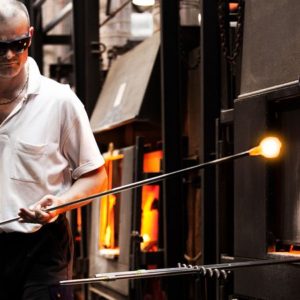 “The work that goes into a handmade glass is incredible,” she says. “I mean, you’re talking about two to three men working together to make that one glass. And it’s not exactly a two-minute process—this is not a case where a machine is kicking out 100 glasses an hour. And it’s premium glass. If it’s not of the top quality, you won’t get that sheen—the glasses will be cloudy instead of being bright and brilliant.
“The work that goes into a handmade glass is incredible,” she says. “I mean, you’re talking about two to three men working together to make that one glass. And it’s not exactly a two-minute process—this is not a case where a machine is kicking out 100 glasses an hour. And it’s premium glass. If it’s not of the top quality, you won’t get that sheen—the glasses will be cloudy instead of being bright and brilliant.
“I always tell people that your wine disappears that night, whether you’ve spent $20 or $70 or whatever on a bottle. But the glass is still there (afterward),” says Hirst. “And even if it’s just there for six months, think about how many bottles of wine you’ve been able to enjoy in that glass. So $70 on a glass doesn’t seem like a bad idea.”
Having seen the Riedel glass-making process in person, Hirst is suitably impressed. “I thought I knew everything about Riedel and crystal, and I discovered I knew so little,” she noted of her Riedel trade junket with husband Dennis to Austria and Germany. “In the Kufstein factory, where everything is hand-made, they still use the exact same tools they did 100 years ago. A stick, little clippers. The heat inside the factory is unbelievable. My iPhone went white after I walked in and I had to walk to let it cool off so I could take a few pictures. They’re working in 50C heat. One thing Maximilian told us when we walked in the room was, ‘Remember—there’s hot glass everywhere. You dance around them; they don’t dance around you.’ Because there are people constantly walking back and forth to the furnace to get more molten glass, and carrying it on their sticks back to the master glassblower. They would never let the public into a factory like this.
“It was an amazing experience,” Hirst adds. “You could never imagine a man making something like one of these glasses with a blow stick and bumping it to make these perfect masterpieces!
“And in the machine-made factories, it’s amazing how much of the glass is recycled,” Hirst notes. “They have conveyor belts where the glasses comes out and there are people grading them, and the ones they pick are the ones they keep. Anything that goes by will fall into a bin and is re-melted, which improves the quality of the glass. They don’t all break, though, and we went and pulled some out of the bin and asked, ‘What’s wrong with this? I look at glasses all day long and I don’t see anything wrong with this.’ And they’d come over and show you what they didn’t like about it. We were told at least 10% were being re-melted. But I just read a report last week from Riedel about the green initiatives they’re taking in all their factories, and in some cases they’re saying 50% of the product is recycled. None of it goes to waste.”
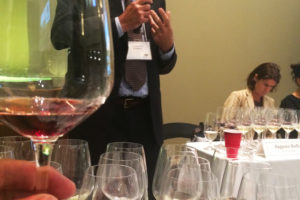
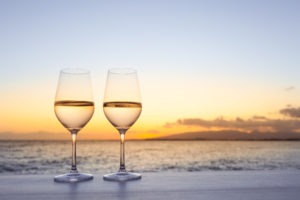
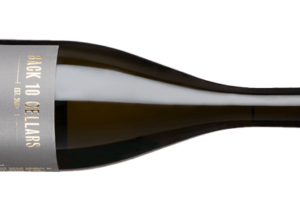
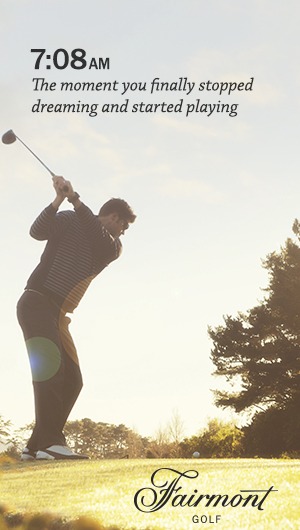

Leave a Reply
Your email is safe with us.